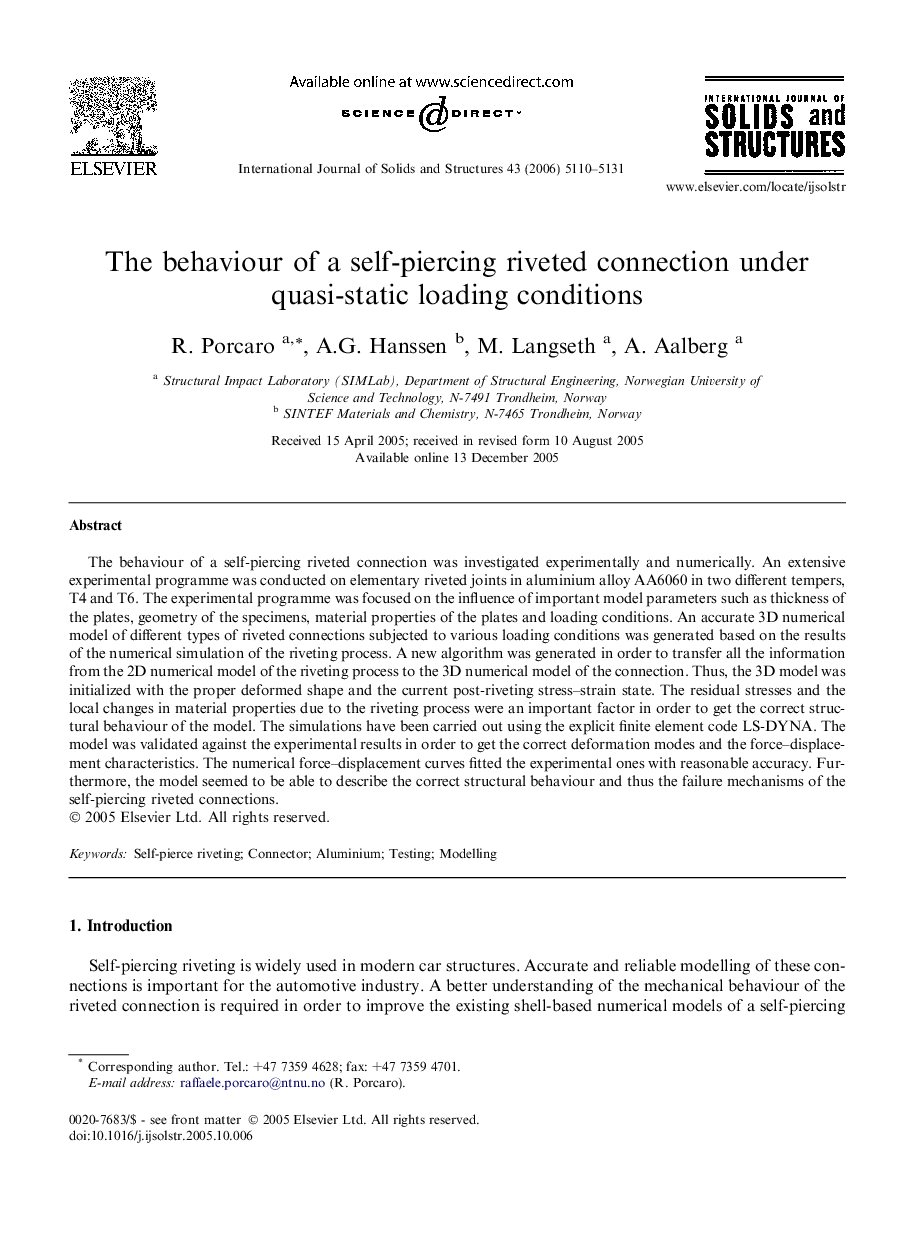| Article ID | Journal | Published Year | Pages | File Type |
|---|---|---|---|---|
| 280226 | International Journal of Solids and Structures | 2006 | 22 Pages |
The behaviour of a self-piercing riveted connection was investigated experimentally and numerically. An extensive experimental programme was conducted on elementary riveted joints in aluminium alloy AA6060 in two different tempers, T4 and T6. The experimental programme was focused on the influence of important model parameters such as thickness of the plates, geometry of the specimens, material properties of the plates and loading conditions. An accurate 3D numerical model of different types of riveted connections subjected to various loading conditions was generated based on the results of the numerical simulation of the riveting process. A new algorithm was generated in order to transfer all the information from the 2D numerical model of the riveting process to the 3D numerical model of the connection. Thus, the 3D model was initialized with the proper deformed shape and the current post-riveting stress–strain state. The residual stresses and the local changes in material properties due to the riveting process were an important factor in order to get the correct structural behaviour of the model. The simulations have been carried out using the explicit finite element code LS-DYNA. The model was validated against the experimental results in order to get the correct deformation modes and the force–displacement characteristics. The numerical force–displacement curves fitted the experimental ones with reasonable accuracy. Furthermore, the model seemed to be able to describe the correct structural behaviour and thus the failure mechanisms of the self-piercing riveted connections.
